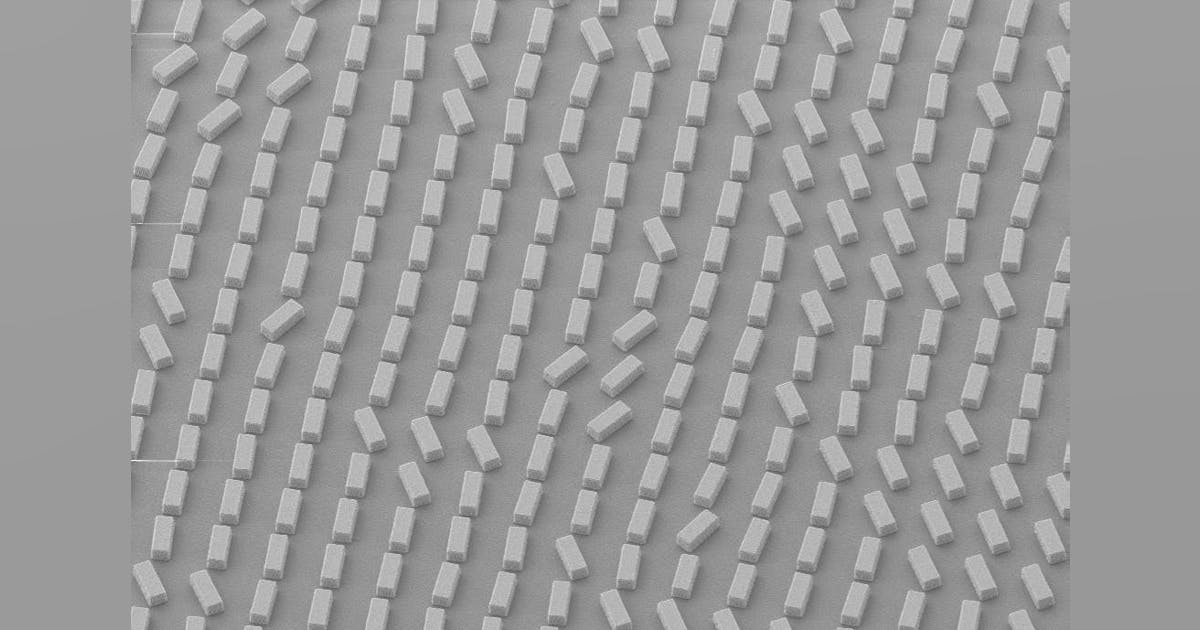Chiral metasurfaces engineered by a team of scientists led by Hatice Altug’s group at the Bionanophotonics Systems Laboratory of the École Polytechnique Fédérale de Lausanne (EPFL) in Switzerland, in collaboration with Yuri Kivshar’s group at the Australian National University (ANU), leverage the interplay between the meta-atom shape and varying the symmetry of its two-dimensional (2D) lattice to easily tune their chirality via polarized light.
The metasurface is crafted from germanium on a calcium difluoride substrate to feature a gradient of meta-atoms with orientations that vary continuously along a chip—and this “control knob” enables seamless tuning of the metasurface’s response to polarized light. In contrast to previous solutions in which very complex chiral meta-atom geometries were used to control the chirality, the team’s new approach makes engineering the chiral response a simple task.
“Our inspiration comes from the fundamental idea of chirality—essentially left- and right-handed materials, which are mirror images of each other that can’t be superimposed,” explains Altug, a full professor at EPFL. “Chirality is pervasive across the living and non-living world, and it plays a fundamental role in biology, chemistry, and materials science. Nature is full of left- and right-handed objects (a.k.a. enantiomers) like our hands or snail shells, which are easy to tell apart.”
But distinguishing left from right can become tricky, “which is fascinating for nanoscale materials,” says Ivan Sinev, a postdoctoral researcher at EPFL. “In living organisms, molecular ‘handedness’ is engraved into the very blueprint of life: the DNA double helix is right-handed in virtually every cell, while the majority of naturally occurring amino acids are left-handed, and most sugars are right-handed. This biological chiral purity is essential—enzymes, receptors, and metabolic pathways are exquisitely enantioselective, so reversing a molecule’s handedness can render a nutrient useless or a drug inactive or even harmful.”
This is where circularly polarized light, which twists like a corkscrew in left- or right-handed spirals as it propagates, comes in handy. It interacts differently with chiral structures, but the effect is generally weak in natural materials, which makes such control difficult.
“Our goal was to develop a simple but powerful way to manipulate light’s ‘handedness’ for advanced optical uses like encryption, sensing, and quantum tech at these tiny scales,” says Ivan Toftul, a Ph.D. student at ANU.
